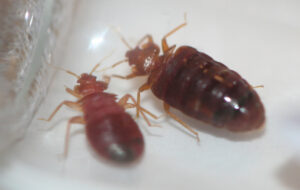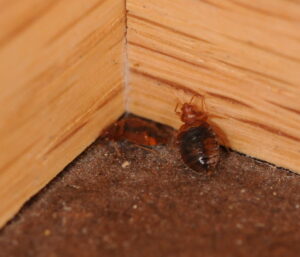It’s 97 degrees outside today in Corvallis Oregon. With the Covid threat, many of us have been cooped up and isolated for the last two years, slowly going mad and pining for the carefree days of yore. Days full of hugs and handshakes, pickup basketball games, and working out in public gyms. *Sigh* 2019…
But this summer is different! As travel restrictions loosen and fear subsides, we crawl from our homes, our hands to our brows shielding our eyes from the blazing natural light of the sun. No longer will we breathe the stuffy air of our home offices. No longer will we stick to the same safe routine of socializing inside our circles and shopping at the same grocer. It’s vacation time! It’s time for tropical beaches and fruity drinks, Penthouses, and poker tables! Even if you want to go Yurtin’ there’s always one thing that’s certain.
There’s still a threat lurking out there from which no masks or hand sanitizer will protect us. It comes for you when you are your most vulnerable, to slake its thirst on your body’s sanguine humor. The dreaded bedbug! <Wilhelm scream>

Few things can make people’s skin crawl like the bedbug. It causes anxiety, shame, and embarrassment wherever it is found. It wasn’t always that way though. They were quite common throughout all of human history. Thought to have branched off from the bat bug back when we were sheltering in caves, they took a liking to us and hitched a ride in our bedrolls. Thousands of human generations later they were traveling the globe with us, riding on boats and airplanes and inspiring cautionary children’s nursery rhymes. Good night, sleep tight, and so on.
People treated them as just another annoying part of life until the 1940’s when advancements in chemistry and pest control brought us chlorinated hydrocarbons and DDT. After that point bedbugs were close to eradicated in the U.S. The end, right? Everyone lived happily ever, science prevailed, and no more bites. No, it was not over.
Fueled by high populations, increased travel, immigration, the adoption of more responsible pest control practices and materials, and the second-hand furniture market (to name just a few factors) bed bugs have made a comeback in the US. Now they are sprinkled across the land where they lie in wait for the unwary traveler to give them a ride to their new home.
Don’t hit that cancel reservation button just yet! Don’t lose heart! With a little knowledge, a sprinkling of vigilance, and a big dose of common-sense protocols, we can reduce our bite risk and help avoid infestation of our homes when we return.

#1 Know your enemy
The adult bedbug is typically a broad oval in shape, flattened to the horizontal, like a pancake. They are usually brownish-red depending on how recently they have had a blood meal, and are typically 1/5-1/4” in length and about 1/8” wide. With those flattened bodies, they like to harbor in tight cracks and crevices near the host of their blood meal. If it’s a frequently used harborage area there will be black spotting around the entrance and inside the harborage from their dried blood feces.
#2 Inspection
Because of its need for food, the most likely place to find a bedbug in a hotel room is around the bed, and due to the frequency of blanket and sheet replacement in a hotel room (hopefully), they are less likely to be on the mattress itself. I will usually just pull the sheets off the corners of the mattress and inspect for activity there. Much more likely areas are the headboard and the adjacent nightstands. It never hurts to check these areas as well as the baseboards at the head of the bead for any obvious sign.
#3 Avoidance
You can’t possibly inspect everything, you’re on vacation and not a secret shopper performing quality checks on hotels. The best thing to do is to assume that there may be an issue and that you could be exposed to bed bugs. One avoidance tactic is to safeguard your luggage. Avoid leaving your luggage on the bed or the floor around the bed. These are the areas that the bugs most likely are hiding and it’s not a stretch for one to get into your suitcase and find its way home with you. Also, refrain from unpacking your clothes into the chest of drawers and nightstands. Instead, opt for leaving your suitcase on the luggage stand and if needed, hang clothes in the closet on hangers. Also, make sure you are zipping everything up when it’s not being used.
#4 Party Down
Get it all out. This is what makes life worth livin’. Bedbug who?
#5 Reckoning – The most important step.
Cut to: you’re pulling into your driveway. That was awesome and all but your back hurts from traveling and you just want to go flop on your own bed and veg out until work on Monday. Not so fast there Nellie Bly! You have damage control to do before you get anywhere close to that bedroom. First, take your suitcase straight to the washing machine. Everything that can go into the wash goes in on hot, or at least when it’s done washing it gets dried on hot. Prolonged high heat will kill any stowaways that may be hiding in your clothes. Anything else that can’t be heat treated should be thoroughly inspected before introduction into your home.
Then all is good! Just take that luggage and slide it under the bed until the thirst for adventure calls once again, right? Wrong! There could be bugs in there! You need to sequester that baggage brosif. Put it in the garage or attic. Refrain from storing it near your bed or any clothing you normally use. If you must store it in the bedroom, a large garbage bag (the thicker the better) can be used to encapsulate the suitcase. Just make sure you tie a nice tight knot in it. In the right conditions bedbugs can live without a meal for months!
Conclusion
I know you’re all thinking “Sure, really easy to write all that down but does it stand up in a real-life scenario?”

You’re right. I need some anecdotal experience that I can pass off as legitimate evidence! So, in the name of science, I took a research trip to Hawaii.
Upon arriving at my room, I found my luggage stands and hung my floral-patterned shirts in the closet. Then I grabbed my flashlight and went to work on inspection. I checked the corners of the mattress and box spring, nothing. I checked between the mattresses and where the bed sits in the frame, nothing. Nightstands, baseboards, and bench at the foot of the bed? All nothing. I tried to take the headboard from the wall for inspection, but it wouldn’t budge.
Satisfied with my diligence with steps #2 and #3 I proceeded to step #4. Because I take my research seriously, I slept in that bed for 6 nights for as long as possible. On the morning of the fourth day, I noticed I had 2 bites on my side. I’m not certain what caused them but at that point, I got a little paranoid and re-inspected the room. Still nothing.
Long story still long, I arrived home and performed the most important step, #5. All clothing items in the washer and dryer before I even went into the house. Knickknacks were inspected and my luggage was zipped up and stowed in the garage loft. It’s now been a month since homecoming and there haven’t been any issues. Conclusion: follow these steps, and you will (probably) be protected from bringing home bed bugs after travel. It was a blast to get out of town! I suggest you do the same.
Be safe out there!



